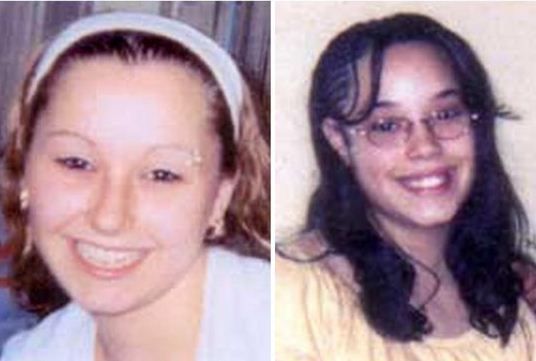
Amanda Berry and Gina DeJesus.

Amanda Berry and Gina DeJesus.
Welcome to Cleveland, Ohio, the home of rapist and serial killer Anthony Sowell; the birthplace of both Henry Mancini and Halle Berry. Plus Ian Hunter wrote a song about it.
Ariel Castro may not be as talented as Hunter, but he is already more infamous than Sowell, even though he is to date only an “alleged”, and doesn’t have as much innocent blood on his hands. As he awaits trial – having failed to raise the $8 million bail bond – the BBC along with every other major news provider in the English speaking world and then some, has sent one of its roving reporters to relate this story - bizarre, inhuman and yet joyful - to its audience.
The Cleveland Captives: What Really Happened? is currently on iplayer, and with doubtless find its way onto YouTube.
Michelle Knight was the first of the captives to go missing; her disappearance resulted in no publicity. So much for Missing White Woman Syndrome. She is said to have had a hard life and to suffer from "mental abnormalities". That was before this (alleged) monster got his hands on her. Surprisingly she is said to have been taken off the missing persons list after 15 months. Hopefully this practice will be reviewed now. When one things of the handiwork of other such monsters like Fred West, John Gacy, and the aforementioned Sowell, it begs the question how many of these lost souls - men as well as women - lie in unmarked graves under the crawlspace of some anonymous suburban house.
The BBC’s man Rick Edwards covers the historical background to the case – the psychic charlatan who told Amanda’s mother she was dead, and the fact that Castro joined in the hunt for Gina DeJesus.
What sort of man is Arial Castro? Edwards speaks to people who know him, including family member Maria Montes and one of Castro’s own daughters. They all describe him as a regular guy. Turned wife-beater, apparently a serious one.

Rick Edwards, the BBC’s man in Cleveland.
What sort of man is Arial Castro? Edwards speaks to people who know him, including family member Maria Montes and one of Castro’s own daughters. They all describe him as a regular guy. Turned wife-beater, apparently a serious one.
He’s also reputed to be one of the top bass players in Cleveland; the end of his musical career in the least of his worries, especially if prosecutors succeed in bringing capital charges against him for the babies he (allegedly) murdered.
The programme uses a computer simulation of Castro’s house to show how he imprisoned the girls, and how he controlled them.
Five years ago, Castro was stopped by a police officer for an arrestable traffic offence. This might have been the end of his evil reign, but when Officer Jim Simone heard he was a school bus driver, he said he didn’t want to see him lose his job, so let him off with a warning, an act of kindness that for Castro’s three captives had a terrible reward.
So what should be done with Castro if he is convicted? Ohio prosecutors aside, the consensus appears to be that execution is too good for him, and that he should be made to suffer the way he made his victims suffer. No genuine social justice advocate could disagree with that.
[The above review was first published May 22, 2013.]
Back To Digital Journal Index